North American P-51D Mustang 44-14295
On the 14th of September 1944, an aircraft was heard by the Irish Army Look Out Post (LOP) at Ballagan, County Louth, away to the north, moving south at 14:30 hours. It was later heard by the LOP's at Dunany Point and Clogherhead moving south. It then turned and was last heard by LOP Clogher Head, to the south moving north.
At around 14:50 hours an aircraft crashed on the land of Joseph Byrne, in Dawestown in the Cooley Mountains in County Louth. The location was not far from Tippings Hill, marked as Trumpet Hill on modern maps. Local man, Tommy McArdle was first on the scene and he described afterwards how he had to take cover due to the noise of exploding ammunition. Acting Captain J. Walsh of the Irish Army, 3rd Cyclist Squadron included in his report dated 16th September to the Eastern Command Intelligence Officer; “At approx. 14.45 hours in 14/8/44 a report was received by telephone from Ravensdale Garda Barracks stating that a plane had crashed in the vicinity of Dawestown. I proceeded to the scene of the crash with a party to act as guard. On arrival there, the plane was burning fiercely and .50 ammunition was exploding incessantly. The plane was completely wrecked and broken into pieces”. He also reported that “No means of identification could be located except a small disc bearing the words I.A.ERVIN and on the reverse side LOVE MURPH 19103013”. What remained of the aircraft was removed by the Irish Army and the crater was filled in.
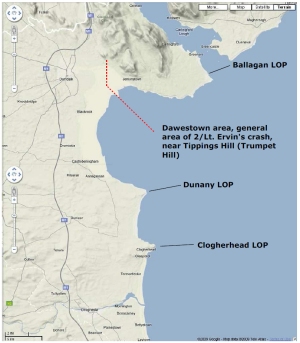
The map at right shows the main points mentioned in the Army report and the general location of the crash.
Major Sprague of the US Military Attaches Office attended the
scene with Irish Army officers. 2/Lt. Ervin's remains were
recovered despite terrible injuries and were handed over the
border to Northern Ireland on the 16th of September at
Carrickarnon customs post. A Guard of Honour was provided by men
of the Irish Army and the US Military Attache praised these
Irish troops from the local garrison. A letter from the US
Military Attache to Capt. J D Walsh, Dundalk Military Barracks
reads:
Dear Captain Walsh,
Major Sprague, my Assistant Military Attache for Air, has
described in most glowing terms the splendid ceremony which
you accorded to the remains of Lieutenant I. A. Ervine. He was
particularly impressed with the smartness and efficiency of
your troops acting as Guard of Honor under Lieutenant Roche.
Please accept my most sincere thanks for the honor which you
have shown my countryman and for the many courtesies to Major
Sprague. It will be my pleasure to convey the above to General
McKenna and to the United States War Department.
J. L. Hathaway
At 13:22 hours on September 14th, 1944, a flight of North American P-51 Mustangs took off on a training flight from Wattisham airfield in Suffolk, England. This was the base of the US Army Air Force’s (USAAF) 479th Fighter Group (FG). The Group consisted of three Fighter Squadrons, the 434th, 435th and 436th. At this time the 479th FG was converting from the P-38 Lightning to the P-51 Mustang fighter. The men and aircraft from the 435th Fighter Squadron were tasked to fly from Wattisham to Edinburgh, then Belfast and back to Wattisham. As the flight neared Ireland they flew into dense overcast cloud and contact was lost with two of the pilots, 2/Lt. Ivan A. Ervin O-769180 and 1/Lt. Chester W. Granville O-760289.

The above image was very kindly produced by Filip Servit and is an impression of what 2/Lt Ervin's aircraft may have looked like and shows what the 'R bar' referred to in the aircraft markings. Photos show that the unit tended to paint over the aircraft serial numbers with the squadron colours.
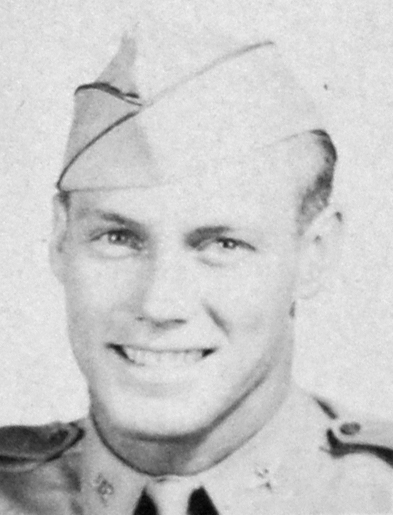 Ivan Ervin
was flying Mustang serial number, 44-14295 with squadron codes
J2-R while Chester Granville flew 44-14437, J2-C. Both aircraft,
P-51-D-10-NA models, were built at the North American plant at
Inglewood, California. Call signs for the pilots were Lakeside
74 and 90 respectively. The US National Archives records show
that Lt. Ervin enlisted on the 4th February 1943 in Santa Anna,
California, and was assigned serial number 19103013. Chester
Granville enlisted a day later in Camp Bastrop, Texas. Both were
later assigned new serial numbers upon their receiving their
commissions as officers.
Ivan Ervin
was flying Mustang serial number, 44-14295 with squadron codes
J2-R while Chester Granville flew 44-14437, J2-C. Both aircraft,
P-51-D-10-NA models, were built at the North American plant at
Inglewood, California. Call signs for the pilots were Lakeside
74 and 90 respectively. The US National Archives records show
that Lt. Ervin enlisted on the 4th February 1943 in Santa Anna,
California, and was assigned serial number 19103013. Chester
Granville enlisted a day later in Camp Bastrop, Texas. Both were
later assigned new serial numbers upon their receiving their
commissions as officers.
Peter Blyberg whose wife is Chester's niece, was able to
provide a copy of a touching letter from a wartime comrade of
Chester's, Howard C Smith, who flew with them on that fateful
day. He wrote the following to Chester’s mother in 1948:
“Might I say here that I do not know if I am writing this letter to Chesters' mother or his wife. I even feel a little reluctant to send this letter because I do not know this Lt. Wynens, or whether it really is your desire to get this information.
I have no record of the exact date of the flight which claimed the lives of Chester and also one other squadron pilot. I do remember clearly the details of what facts were known.
This particular flight was not a combat mission over enemy territory, but rather was a training flight over the English Isles. We as a squadron were undergoing a transition from P-38 aircraft to the P-51 types.
None of us at that time were overly familiar with the P-51.
On that day our squadron commander ordered a training flight under the leadership of a captain flight leader. There were several flights forming a squadron formation. Chester was leading one flight of four ships. Shortly after take off, I flying on Chester's wing, noticed he was losing oil. I informed him of this fact and he radioed that he would return to and land. That left three remaining in our flight so Lt. Pigg took over the lead with Lt. Lt Detlefson on one wing and me on the other. (Both of these pilots were later killed in combat operations).
A few minutes later, Chester radioed that his oil trouble didn't seem serious and that he would rejoin our flight. When he did return he instructed us to remain as we were and that he would fly on my wing.
+ Pigg + Detlefson + Smith We remained in this position. + Granville
Everything went along smoothly for some time and then arose one of those hazards which were ever present in that part of the world. It had not been a particularly stormy day, however, almost without warning we hit into instrument weather. It has always been my regret that the squadron did not at that time turn 180 and leave the storm.
As suddenly as we had entered this instrument weather, we broke free of it for a moment. During this moment of clear vision, our flight crossed over another flight – very narrowly avoiding a mid-air collision. Seconds later another moment of vision was afforded us. During this very brief moment of clearance, a plane from another flight went past Chester and me at a very close distance, going straight up. Evidently that pilots instruments were not uncaged for use, as a result he was killed at that time by crashing on the coast of Ireland.
The rest of the squadron proceeded on instrument flying. Our hopes were of course that we would break into the clear soon for there had been no forecast of extreme bad weather. As we proceeded however it grew more dense, so that from then, until we landed we were flying entirely on instruments for well over an hour.
I began to notice that Chester was not flying close enough to me and I called him several times to stay in closer so we could keep visual contact between us. It was necessary to fly with wing tips no more than 3 – 4 feet apart to keep contact. He replied that he was finding it difficult to stay in close. This was because he had been leading flights for a long period of time and as such he did not get much practice in flying extremely close formation to another's wing. This made it doubly difficult, because he like rest of us had flown the P-51 only two, three or four times previously.
As best I could judge, Chester stayed in position for about ten minutes more, and then he faded from sight. I called him and received answers several times after this. He said he would have to proceed alone because he could not find the flight. I did not have many worries about him then because he was one of the most capable and competent pilots in the squadron, in fact I was wishing I were with him because he was that good.
Some time later, after I had been unable to contact him by radio I heard him for the last time call a station for a homing fix. There were many calls in the air about then because we all needed homing directions.
Everyone eventually returned to the home base except Chester and the other lt. No one knows exactly what happened to Chester, intelligence reported that his plane was never found. I made a careful map survey and judging by where the other Lt. crashed, I believed that Chester must have gone down in the Irish sea. He may have had engine trouble because of the previous oil leak, although the last time I inquired he said it was OK.
Well, that is about all there is to tell, It was a sorrowful occasion then and it is to me now. I felt his loss perhaps more keenly that did any other friend or relative war casualty”.
The USAAF reports put the loss of 2/Lt. Ervin down to bad weather, weather which had caused the remaining aircraft in the flight to fly on instruments for over an hour. Chester Granville and his aircraft were never found. The American authorities notified the Royal Air Force in Northern Ireland and a rescue boat was sent to an estimated position but the weather was such that no search aircraft could be launched. A three day search controlled by USAAF 65th Fighter Wing was mounted off the English coast but to no avail. 1/Lt. Granville's name is entered on the Tablets of the Missing at the Cambridge American Cemetery in Cambridge, England.
During a visit to the Dawestown area in November 2009 I was lucky enough to meet Ray Byrne and his sister. He was able to confirm the spellings of areas which were misspelled in the Irish Army reports. Dawestown was referred to as 'Dawsonstown', while Tippings Hill was mentioned as Kippens Mount or Kippery Hill. His home is built in a corner of the field that he understands is where 2/Lt. Ervin crashed. During digging while planting trees near the house, fragments of metal were found. In the past, shell casings were found in the area. The family has one piece of the aircraft. It is a machine gun mounting, part number 106-61026, still carrying its part number tag and green factory primer. The photos below are of this gun mount.
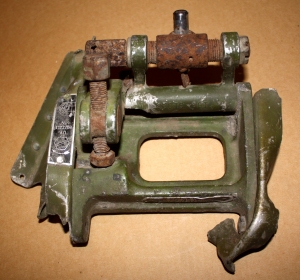
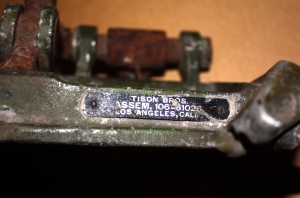
Ray has gathered the memories of local people from the community who lived there at the time of the crash. Over the years he has spoken to a number of people who heard the sound of the Mustang and the impact. The plane was flying very low in poor visibility and seemed to be circling for a while. Eventually it made an approach from the west from the vicinity of Tipping’s Wood and crashed into the field where later he was to build his home. Josie Byrne, an uncle of his and owner of the field, lived in a house overlooking the scene about 100 yards away. Tom McArdle, his next door neighbour, described to Ray how he hid behind a wall on hearing the sound of exploding shells fearing the long-awaited invasion was taking place.
Tom Murphy, who lived about 300 yards to the south of the site
was a little more courageous. He set out on his bicycle on
seeing the smoke after the impact. He met with ‘Lad’ Finnegan, a
neighbour, who was behind a hay rick and reluctant to venture
any further! When Tom reached the crash he was relieved that
another had arrived before him. Unfortunately there was nothing
they could do to help Ivan as he had obviously died immediately
on impact. Later others in the locality visited the site as a
number of aircraft fragments were collected as ‘mementos’. This
must have happened before the arrival of army personnel from the
town of Dundalk about 6 miles away. The normal procedure would
have been to cordon off the crash site. Some of the lore handed
down was obviously inaccurate. For example, it was said that
because of the force of the impact the plane buried itself so
deep in the earth that it wasn’t possible to remove it or Ivan’s
body. Another story said that a crop of barley in the field was
destroyed even though Josie only reared sheep! A lot of the
confusion may be explained by the fact that there were two other
wartime crashes within sight of the Dawestown one. In August
1941, an RAF Hudson bomber, AE577,
crashed killing three airmen while sixteen men died in March
1942 in the crash of Liberator AL577.
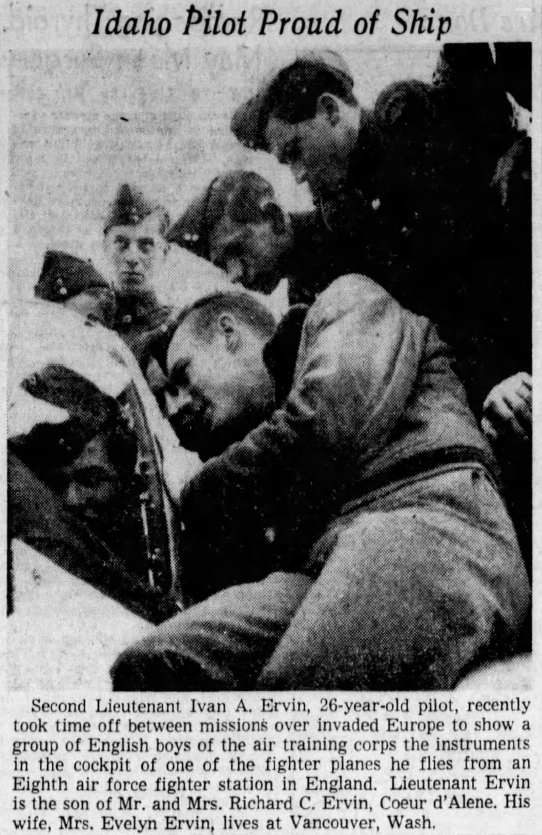 Ivan Ervin was born in
1918 in Killam, Alberta, Canada to Ellen and Richard C Ervin.
The family moved from Canada in 1923 to the United States. Prior
to enlisting in the Army Air Forces, Ivan was a school teacher,
and it is in this capacity that he is found on the 1940 United
States census, living as a single lodger in the house of William
Rohen in Vancuever, Washington, a 22 year old elementary teacher
in a Public Grade School.
Ivan Ervin was born in
1918 in Killam, Alberta, Canada to Ellen and Richard C Ervin.
The family moved from Canada in 1923 to the United States. Prior
to enlisting in the Army Air Forces, Ivan was a school teacher,
and it is in this capacity that he is found on the 1940 United
States census, living as a single lodger in the house of William
Rohen in Vancuever, Washington, a 22 year old elementary teacher
in a Public Grade School.
He married on the 16th August 1942 in Spokane to Evelyn Murphy
who was also a school teacher. He had studied in Eastern
Washington College and had been an outstanding athlete. He had
one sister and two brothers, both of whom also served in the
military during the war.
Ivan appeared in the Semi-Weekly Spokesman Review on 26th July
1944 in the photo showing the instruments of his P-38 Lightning
to some British ATC cadets.
Ivan's wife, Evelyn remarried after the war and died in 2004.
She continued to teach and played a full roll in her new
community. The obituary in her local paper included a nickname,
'Murph', the same name found on the battered I.D. Tag on a
County Louth hillside in 1944.
The Columbian newspaper, from Vancouver, Washington published the following article on September 22, 1944 on the front page, and a shorter version with a photo on the 27th September.
The award of a an Air Medal for exceptionally meritorious
service was announced in Idaho in October 1944.
Ex-teacher Here Killed
Lieut. Ivan A. Ervin, who for three years was a teacher
at Lincoln grade school prior to his entering the service
February 1942, was killed in a plane crash in Europe on
September 14, according to a telegram recived yesterday by his
wife, Mrs. Evelyn Ervin, now teaching at the Fruit Valley
elementary school.
A fighter pilot of a F-51 Mustang, Lieutenant Ervin was
the victim of an accident, details of which will be in a
letter which is to follow the brief telegram received here
Thursday.
During four years' residence at Vancouver, Lieutenant
Ervin lived at 400 E. Twenty-second St., which is his wife's
address.
Ervin's parents are Mr. and Mrs. R.C. Ervin of Cour 'de
Alene, Ida. He has two brothers both of whom are in the
service. Sgt. Larry Ervin is now in Mexico, following 30
months of fighting in the South Pacific. AEM/3c Stanley
Ervin is station at Jacksonville, Fla.
A sister, Mrs. Emil Raugust, lives in Couer 'de Alene.
The Ritzville Journal-Times published the following news item on the 5th October 1944:
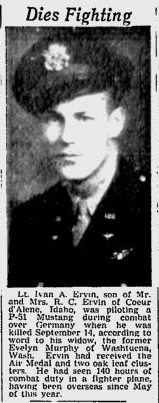 Lieutenant Ervin
Killed In Combat
Lieutenant Ervin
Killed In Combat
Lt. Ivan A. Ervin, fighter pilot of a
P-51 Mustang, was killed Sept. 14 during combat over Germany,
according to word received by his wife, Mrs. Evelyn
Ervin, daughter of Mr. and Mrs. J. E. Murphy, Sr., of
Washtucna.
Lieutenant Ervin, who entered the
service in February, 1942, received his wings and commission
at Williams Field, Ariz., Dec. 7, 1943. He had been
overseas since the early part of May and had seen 140
hours of combat duty in a fighter plane. He had been flying
the P-38 Lightning and the P-51. Since being
overseas, he has received the air medal and two oak leaf
clusters.
Prior to entering the service, he was
an instructor at Vancouver, Wash. He attended Eastern
Washington college of education where he was an
outstanding athlete, playing on the college basketball
team. He was a member of the W club, Intercollegiate
Knights and Scarlet Arrow, men's honorary society.
In addition to his wife, who had been
living in Vancouver since her husband left for overseas,
Lieutenant Ervin leaves his parents, Mr. and Mrs. Richard
C. Ervin of Coeur d'Alene; two brothers in the
service, Technical Sergeant Laurence Ervin, lately
returned from 30 months in the South Pacific and now
at Fort Huachuca, Ariz., and A. E. M. 3/c Stanley Ervin,
stationed at Jacksonville, Fla.
His death was widely reported in many newspapers from Washington and Idaho during the month of September 1944. Some of these news reports, like that above, suggested he had been killed in combat. His brother Lawrence had been serving the past three years with the Field Artillery in the South Pacific.
The following year, his widow was presented with his posthumous
air medal and two oak leaf clusters at a ceremony at Paine
Field, Everett, Washington on June 23rd.
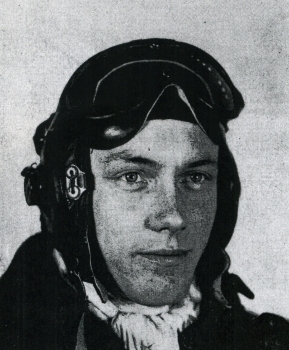
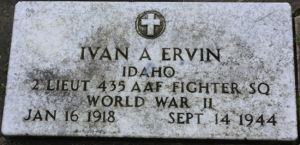
Ivan Ervin's photo from the Squadron history supplied by the
US Air Force Historical Support Office and a photo of his
headstone very kindly taken by Waneva Maymon a kind volunteer on
findagrave.net.
Ivan was initially interred early on the morning of September
18th at the Lisnabreeny cemetery near Belfast in plot B-6-8. In
1948, 2/Lt. Ervin's parents arranged with the service
authorities to have his remains returned to Idaho. They buried
their son in his home town of Coeur d'Alene, Idaho in the autumn
of that year.
In 1947 an electric scoreboard was presented to Eastern
Washington College, now university, by Scarlet Arrow as a
memorial to Ervin, a former member. He was a member of the
EWC teams, winning the Winco championship in 1936, 1937, 1938
and 1939.
He remains interred in the wooded surroundings of the Forest Cemetery in Coeur d'Alene.
Chester W Granville was the son of Dorothea H and Maurice F Granville and husband of Dorothy J Granville. The family hailed from LaGrange, Fayette County, Texas. Chester grew up in rural Texas and attended the University of Texas in Austin where he was a star athlete, competing in both American football, basketball and baseball on intercollegiate teams. He married Dorothy Farmer not long after graduation and enlisted in the Army Air Corps where he was trained as a fighter pilot. Chester Granville is fondly remembered on a memorial in his family plot in La Grange, Texas. The photos below are a family portrait image of Chester from his family and a copy of a squadron photo supplied by the US Air Force Historical Support Office.
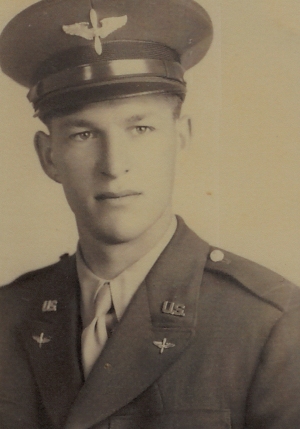
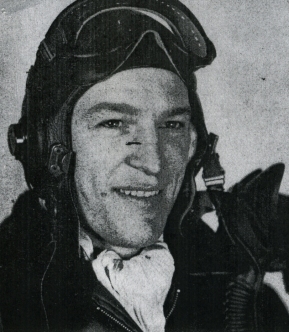
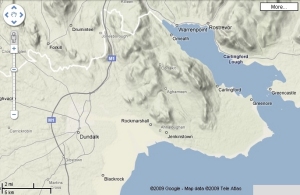
The mountains in this area had already claimed the destruction of two aircraft prior to Lt Ervin's death. First, an RAF Hudson crash in September 1941 killed three men, followed by an RAF Liberator which crashed in April 1942 killing 16 men.
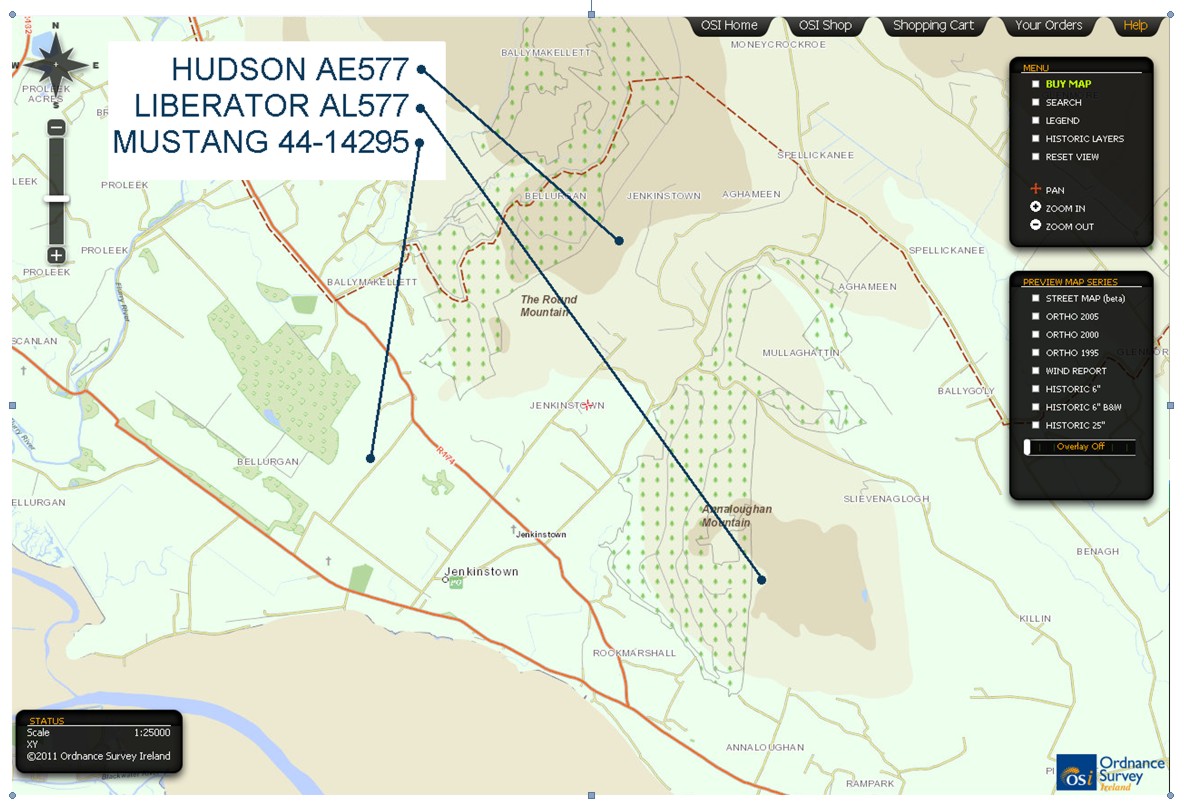
Sources:
- Irish Military Archives Report
- Ray Byrne & Family, Dawestown, 2009.
- Tina Wikum and Dina Lynn and the Ervin family.
- Peter Blyberg, Maine, USA
- USAAF Crash report & Missing Air Crew Report 9248
- http://ftp.rootsweb.com/pub/usgenweb/wa/adams/obits/1944-4.txt
- Office of Air force History, Bollings AFB 2008
- aad.archives.gov
- www.wwiimemorial.com
- littlefriends.co.uk
- Alice Allen - Adams County
- Michelle and Lily Plumb - Washtucna
- http://home.att.net/~jbaugher1/p51_10.html
- Jan Hey 2007
- Tony Kearns 2010
- Ancestry.com
